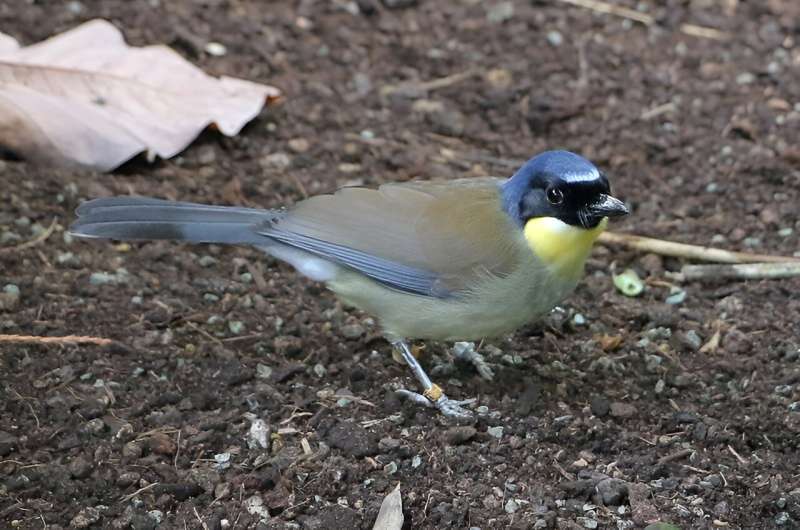This article has been reviewed according to Science X's editorial process and policies. Editors have highlighted the following attributes while ensuring the content's credibility:
fact-checked
peer-reviewed publication
trusted source
proofread
Critically endangered bird at a greater risk of being taken for captivity than harmed through loss of habitat

Research by Royal Holloway, University of London and ZSL has found that a critically endangered bird's biggest threat is being taken from its habitat to be used as a caged bird for its beauty.
The blue-crowned laughingthrush, which is now only found in small areas of Southeast China with around 400 in the wild, has been on the critically endangered list for 17 years and is still in danger of extinction thanks to being trapped and sold.
While loss of habitat has been a factor in the bird's decline, there has until now been no assessment of the usefulness of local ecological knowledge (LEK)—the knowledge and experiences of rural communities who live alongside the species—to provide new conservation-relevant information for understanding its current threats.
The academics responsible for the new study, now published in People and Nature, conducted systematic interviews with local people to collect novel information on the species across its range, and whether potential human activities and landscape changes correlated with its presence or absence.
Almost half of interviewed respondents reported sightings of the bird, and more than half of known blue-crowned laughingthrush breeding sites were confirmed by LEK data. New information was also gathered about nesting habitats from two villages with no previous breeding records.
However, trapping of the blue-crowned laughingthrush was also reported across the study landscape, mostly from the last decade and associated with trappers from urban centers.
The study noted that local knowledge from residents can make a huge difference in identifying potential threats, new breeding sites, and landscape changes correlated with species presence or absence for threatened birds affected by the Asian songbird crisis.
Dr. Rosalind Gleave, from the Department of Biological Sciences at Royal Holloway, University of London, said, "This study provides the first evidence of ongoing trapping as a threat to the blue-crowned laughingthrush, and shows us that immediate remedial measures are urgently required across the region.
"Given the widespread songbird decline across Asia due to trade, trapping should not be discounted as a past and future threat and must be considered alongside other potential current threats to the birds.
"Respondents showed awareness of whether trappers were local or outsiders, suggesting the potential for community-based conservation to provide early warnings of trapping conducted by external actors."
Professor Samuel Turvey, from the Institute of Zoology at ZSL, said, "Obtaining accurate information about the status of at-risk species, and especially about the threats they continue to face, is essential to conserve China's incredible biodiversity.
"Engaging with local communities, who can share what they know about the rare species that survive in their landscapes, is a crucial component of conservation planning. This approach can hopefully enable 'win-win' solutions to be found that support both biodiversity and the needs of local people."
More information: Rosalind A. Gleave et al, Can local ecological knowledge establish conservation baselines for the Critically Endangered Blue‐crowned Laughingthrush?, People and Nature (2024). DOI: 10.1002/pan3.10643
Journal information: People and Nature
Provided by Royal Holloway, University of London


















